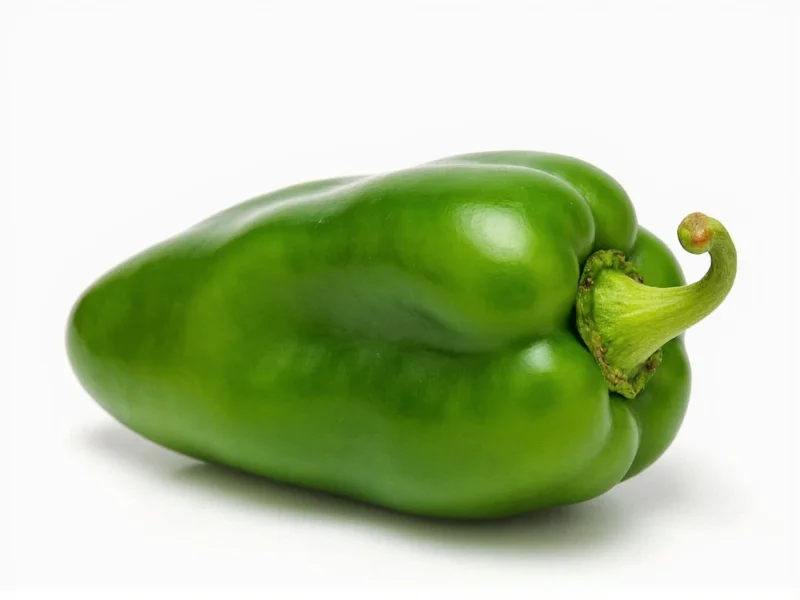Understanding the exact heat level of serrano peppers helps home cooks and culinary professionals create balanced dishes with predictable spice. Unlike subjective descriptions like "hot" or "very hot," the Scoville scale provides an objective measurement of capsaicin concentration—the compound responsible for a pepper's burn.
What Are Scoville Heat Units?
The Scoville scale, developed by pharmacist Wilbur Scoville in 1912, measures the pungency of chili peppers. Originally determined through human taste testing, modern laboratories now use high-performance liquid chromatography (HPLC) to precisely measure capsaicinoids. The resulting Scoville Heat Unit (SHU) value indicates how much sugar-water solution would be needed to dilute the heat to undetectable levels.
Serrano Pepper Heat Range Explained
Serrano peppers consistently register between 10,000–23,000 SHU on the Scoville scale. Several factors influence where an individual serrano falls within this range:
- Maturity: Riper red serranos often test hotter than green varieties
- Growing conditions: Soil composition, water stress, and sunlight exposure affect heat levels
- Plant genetics: Different cultivars produce varying capsaicin concentrations
- Position on plant: Peppers from upper branches typically develop more heat
| Pepper Variety | Scoville Heat Units (SHU) | Heat Comparison to Serrano |
|---|---|---|
| Serrano | 10,000–23,000 | Baseline |
| Jalapeño | 2,500–8,000 | 3–9x milder |
| Cayenne | 30,000–50,000 | 1.5–2x hotter |
| Habanero | 100,000–350,000 | 5–15x hotter |
| Thai Bird's Eye | 50,000–100,000 | 3–5x hotter |
How Serranos Compare to Other Common Peppers
When planning recipes, understanding relative heat levels prevents culinary disasters. Serranos deliver approximately 2–3 times more heat than standard jalapeños but remain substantially milder than cayenne peppers. Their thinner walls and crisp texture make them preferable to jalapeños for fresh salsas where heat penetration matters.
Many home cooks mistakenly substitute serranos one-to-one for jalapeños, resulting in unexpectedly spicy dishes. For equivalent heat, use half the quantity of serranos compared to jalapeños in recipes. Alternatively, remove seeds and membranes—the primary capsaicin reservoirs—to reduce serrano heat by up to 75%.
Practical Applications of Serrano Heat Levels
Chefs leverage serrano peppers' consistent medium-high heat for specific culinary applications:
- Salsas and pico de gallo: Provides noticeable heat without dominating fresh tomato flavors
- Guacamole: Complements avocado's richness better than milder jalapeños
- Marinades: Heat penetrates meats more effectively than bell peppers or poblanos
- Pickled preparations: Maintains crisp texture better than thicker-walled jalapeños
For those sensitive to capsaicin, wearing gloves when handling serranos prevents skin irritation. Always wash cutting boards and knives thoroughly after preparation to avoid accidental cross-contamination with mild ingredients.
Measuring Pepper Heat at Home
While professional Scoville testing requires laboratory equipment, you can conduct informal heat comparisons:
- Prepare identical recipes using equal quantities of different peppers
- Have multiple tasters evaluate heat levels on a 1–10 scale
- Calculate average scores to determine relative heat
- Adjust future recipes based on your personal tolerance
Remember that individual heat perception varies significantly based on genetics, previous exposure, and even current health conditions. What seems moderately spicy to one person may feel extremely hot to another.
Historical Context of Serrano Peppers
Native to Mexico's mountainous regions ("serrano" means "from the mountains" in Spanish), these peppers have been cultivated for over 500 years. Originally grown in the states of Puebla and Hidalgo, serranos gained international popularity through Mexican cuisine's global expansion. Their reliable heat profile and crisp texture made them ideal for traditional salsas verde where consistent spice matters.
FAQ: Serrano Pepper Heat Questions
How much hotter are serrano peppers than jalapeños?
Serrano peppers typically measure 10,000–23,000 Scoville units, making them approximately 2–3 times hotter than jalapeños (2,500–8,000 SHU). When substituting serranos for jalapeños in recipes, use about half the quantity to maintain similar heat levels.
Do red serrano peppers have more heat than green ones?
Generally yes—ripe red serrano peppers often test at the higher end of the 10,000–23,000 SHU range compared to green serranos. The ripening process concentrates capsaicin, though individual growing conditions can affect this pattern. Red serranos also develop slightly sweeter flavor notes alongside increased heat.
Can cooking reduce serrano pepper heat?
Cooking doesn't eliminate capsaicin but can redistribute it. Simmering serranos in liquid-based dishes like soups or sauces allows heat to disperse more evenly. Roasting concentrates flavors but doesn't reduce overall SHU. For significantly milder results, remove seeds and membranes before cooking—these contain most capsaicin.
Why do some serrano peppers taste hotter than others?
Natural variation occurs due to growing conditions (water stress increases heat), plant maturity, and genetic differences between cultivars. Even on the same plant, upper-branch peppers typically develop more capsaicin. This explains why two serranos from the same grocery bag might deliver noticeably different heat levels.
How do serrano peppers compare to cayenne peppers in heat?
Serranos (10,000–23,000 SHU) are significantly milder than cayenne peppers (30,000–50,000 SHU). Cayennes typically measure 1.5–2 times hotter than the hottest serranos. While serranos work well in fresh preparations, cayennes' higher heat makes them better suited for dried spice applications where intense but controlled heat is needed.











 浙公网安备
33010002000092号
浙公网安备
33010002000092号 浙B2-20120091-4
浙B2-20120091-4